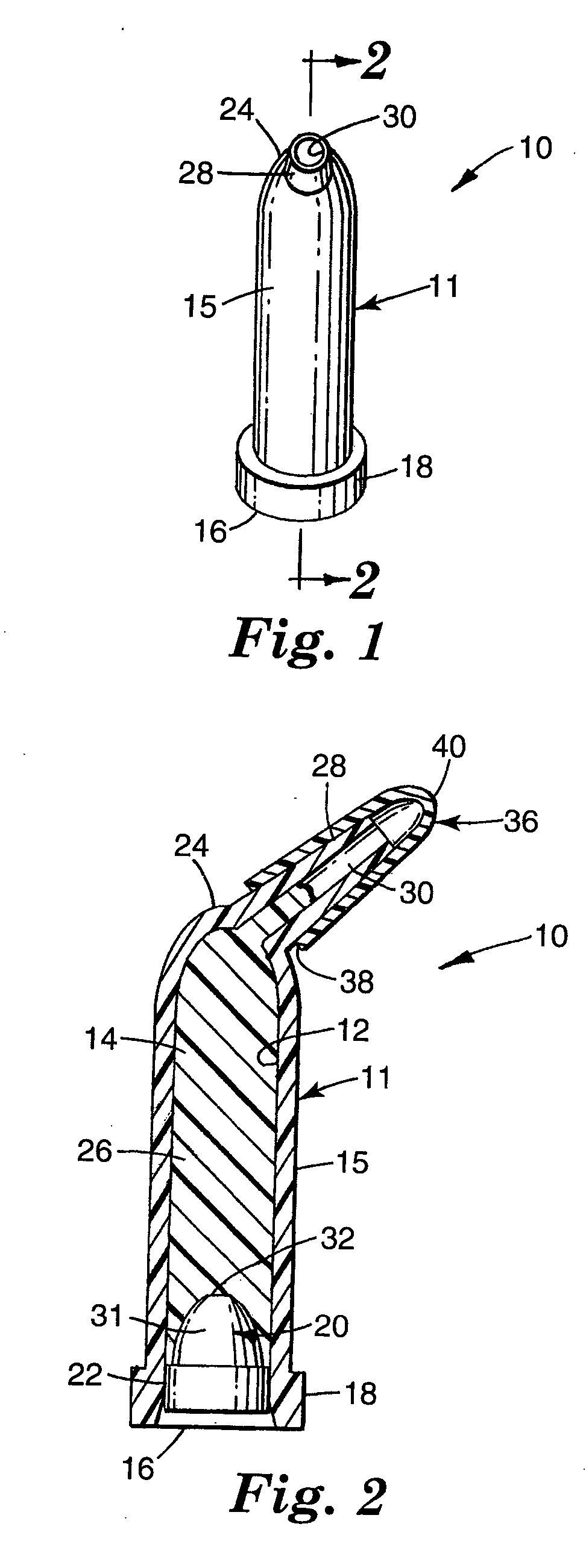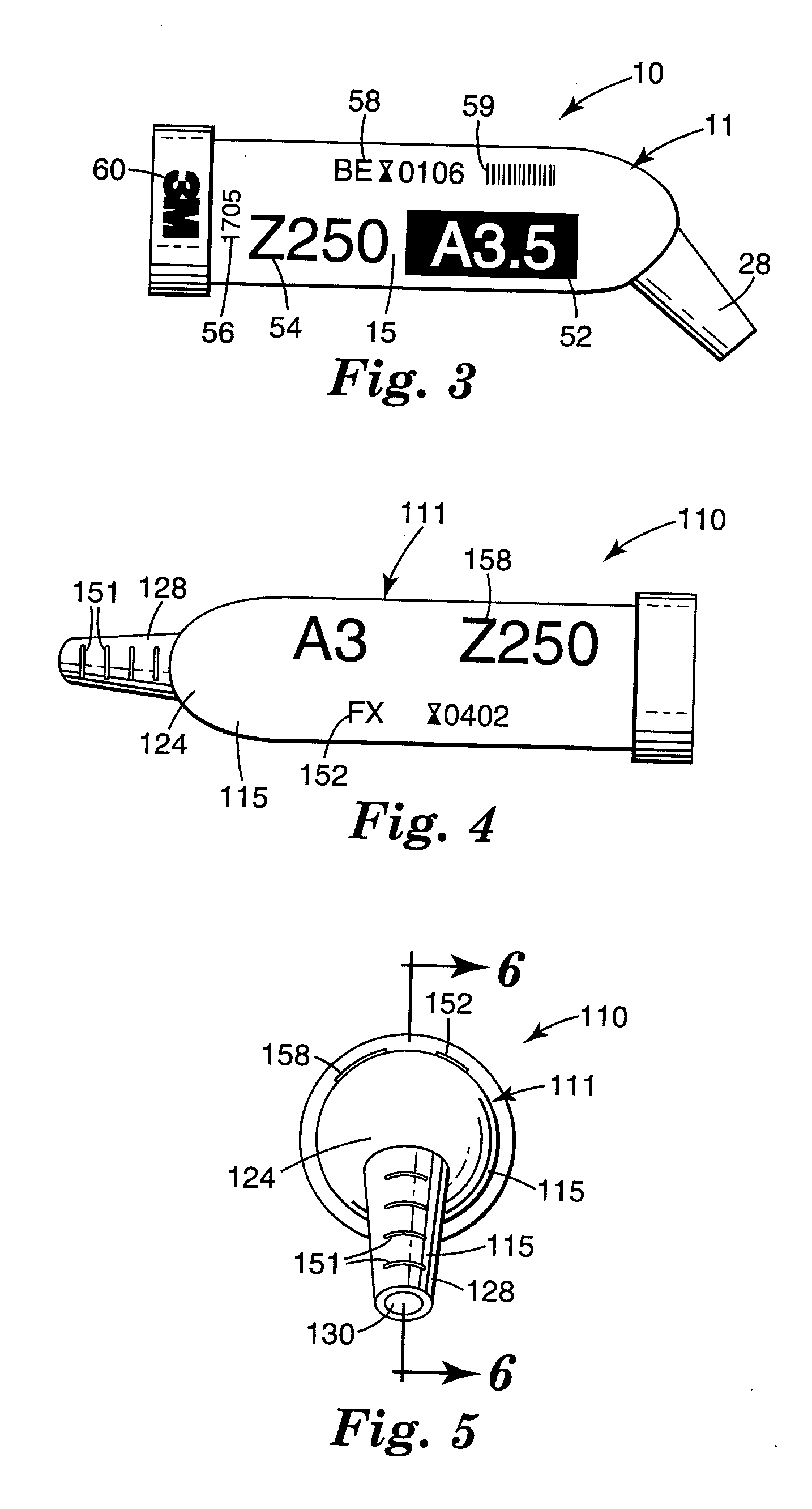Method of forming dental restorative material packaging
a technology of dental restorative materials and capsules, applied in the field of capsule assembly, can solve the problems of difficult control of pad printing position and quality, long association of ink printing, certain amount of labor, time and expense,
- Summary
- Abstract
- Description
- Claims
- Application Information
AI Technical Summary
Benefits of technology
Problems solved by technology
Method used
Image
Examples
example 1
Polymeric capsules (i.e., cartridge) designed to hold radiation-reactive dental restorative materials were produced from different laser-enhanced (LE) polymers using conventional injection molding techniques. The capsules were black in color, tubular in shape with a tapered nozzle (i.e., discharge nipple) at one end, and had an interior chamber. The capsules were 2.3-cm long×6.6-mm outside diameter with a 4.0-mm inside diameter and have been previously described, e.g., in U.S. Pat. No. 5,624,260 (Wilcox et al.). Alternatively, for evaluation purposes, rectangular- or dog bone-shaped test articles were injection molded from various LE polymers.
The outer surface of the polymeric capsules or test articles were marked with an Nd:YAG laser (YAG laser engraving system sold under the brand name “Hi-Mark” No. 400 from GSI Lumonics, Inc., Kanata, Ontario, Canada) using specific marking speed, laser power and frequency of laser pulse process parameters. The marks appeared as white, and typ...
PUM
| Property | Measurement | Unit |
|---|---|---|
| wavelength | aaaaa | aaaaa |
| volume | aaaaa | aaaaa |
| volume | aaaaa | aaaaa |
Abstract
Description
Claims
Application Information
 Login to View More
Login to View More - R&D
- Intellectual Property
- Life Sciences
- Materials
- Tech Scout
- Unparalleled Data Quality
- Higher Quality Content
- 60% Fewer Hallucinations
Browse by: Latest US Patents, China's latest patents, Technical Efficacy Thesaurus, Application Domain, Technology Topic, Popular Technical Reports.
© 2025 PatSnap. All rights reserved.Legal|Privacy policy|Modern Slavery Act Transparency Statement|Sitemap|About US| Contact US: help@patsnap.com



